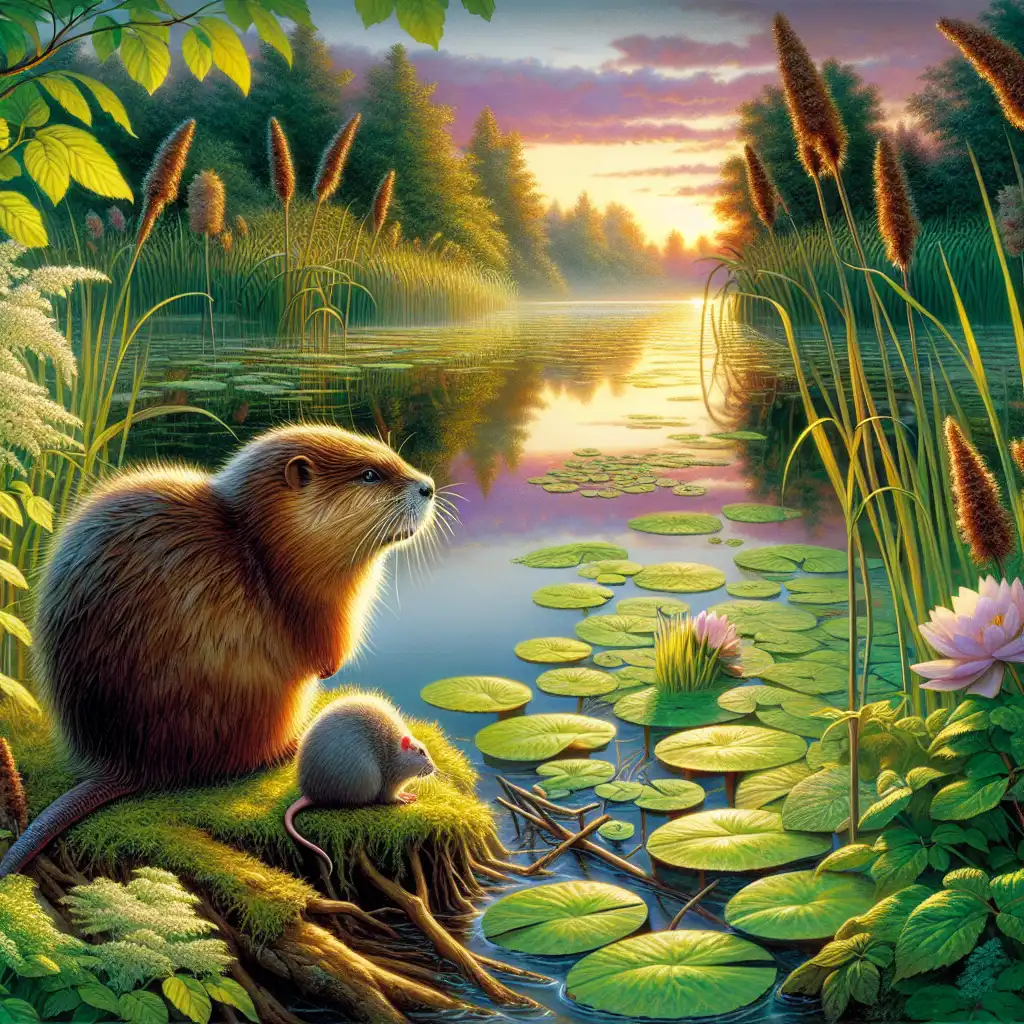
Muskrat
Habitat Specific
Muskrats are closely associated with aquatic environments, so use this word when discussing animals in such habitats.  On our canoe trip, we spotted a muskrat by the riverbank.
On our canoe trip, we spotted a muskrat by the riverbank.
Not a Rat
Despite its name, a muskrat is not a type of rat; it belongs to a different family of rodents.  Although many mistake it for a rat, the muskrat is actually a different species.
Although many mistake it for a rat, the muskrat is actually a different species.
Cultural Presence
Muskrats are featured in Native American folklore and have cultural significance, often representing adaptability.  The story told us how the muskrat brought earth from the bottom of the water to create land.
The story told us how the muskrat brought earth from the bottom of the water to create land.